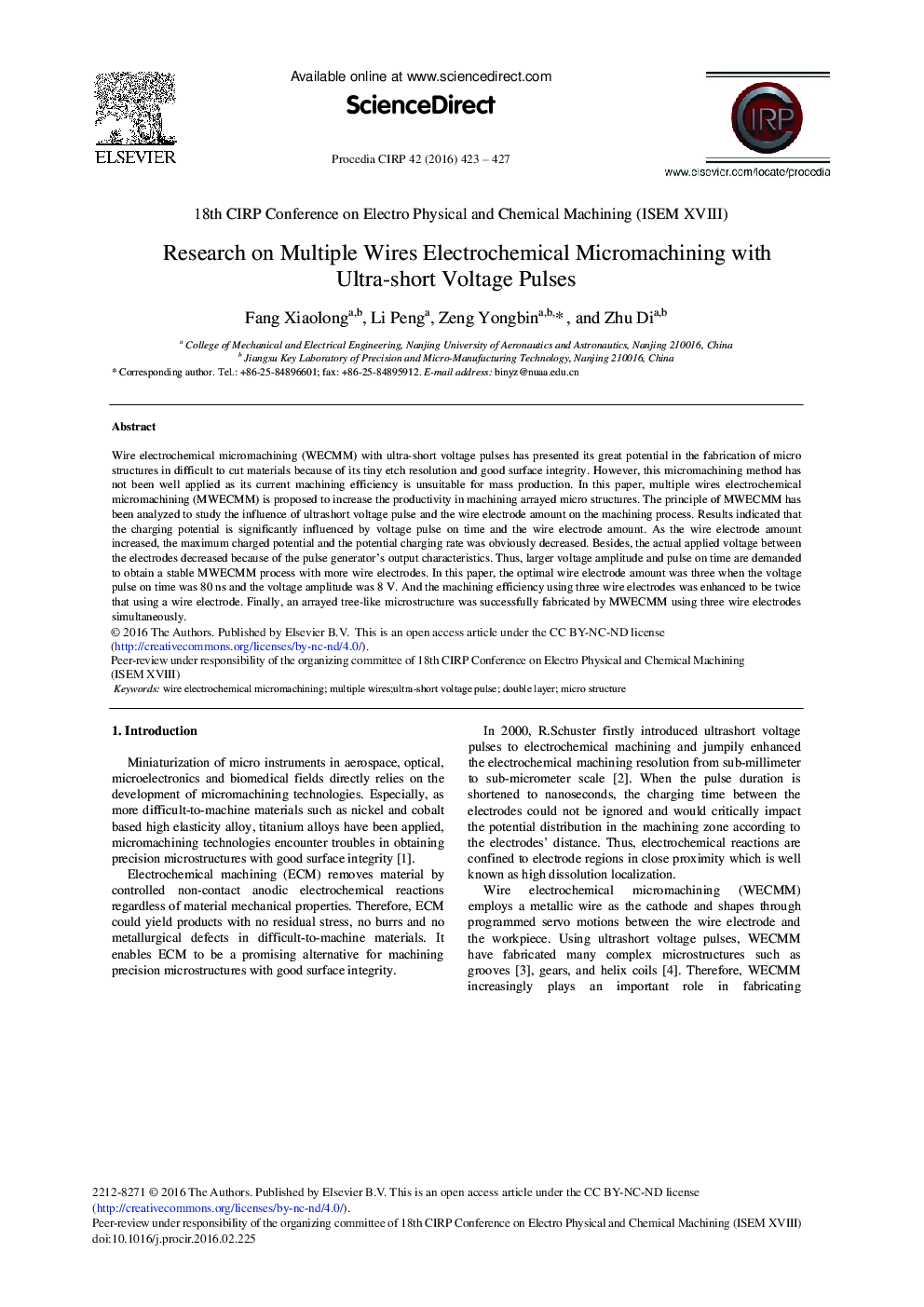| کد مقاله | کد نشریه | سال انتشار | مقاله انگلیسی | نسخه تمام متن |
|---|---|---|---|---|
| 1698978 | 1519310 | 2016 | 5 صفحه PDF | دانلود رایگان |

Wire electrochemical micromachining (WECMM) with ultra-short voltage pulses has presented its great potential in the fabrication of micro structures in difficult to cut materials because of its tiny etch resolution and good surface integrity. However, this micromachining method has not been well applied as its current machining efficiency is unsuitable for mass production. In this paper, multiple wires electrochemical micromachining (MWECMM) is proposed to increase the productivity in machining arrayed micro structures. The principle of MWECMM has been analyzed to study the influence of ultrashort voltage pulse and the wire electrode amount on the machining process. Results indicated that the charging potential is significantly influenced by voltage pulse on time and the wire electrode amount. As the wire electrode amount increased, the maximum charged potential and the potential charging rate was obviously decreased. Besides, the actual applied voltage between the electrodes decreased because of the pulse generator's output characteristics. Thus, larger voltage amplitude and pulse on time are demanded to obtain a stable MWECMM process with more wire electrodes. In this paper, the optimal wire electrode amount was three when the voltage pulse on time was 80 ns and the voltage amplitude was 8 V. And the machining efficiency using three wire electrodes was enhanced to be twice that using a wire electrode. Finally, an arrayed tree-like microstructure was successfully fabricated by MWECMM using three wire electrodes simultaneously.
Journal: Procedia CIRP - Volume 42, 2016, Pages 423-427